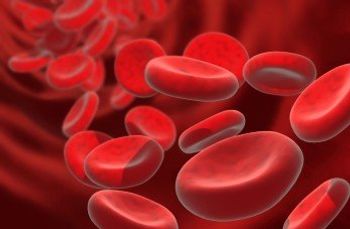
Mirvetuximab Benefit Confirmed in MIRASOL Trial in Frα+ Ovarian Cancer
Treatment with mirvetuximab soravtansine appears to produce a 3-fold improvement in objective response rate vs chemotherapy among patients with folate receptor-α–expressing, platinum-resistant ovarian cancer in the phase 3 MIRASOL trial.
During an interview with CancerNetwork®, Ritu Salani, MD, discusses how the benefit of mirvetuximab soravtansine-gynx (Elahere) in patients with folate receptor-α–positive, platinum-resistant cancer was further confirmed in the
Salani, the Gynecologic Oncology Fellowship Director at University of California Los Angeles Health and the Gynecologic Oncology editorial board member for the journal ONCOLOGY®, highlighted how the MIRASOL data built upon findings from the phase 3 SORAYA trial (NCT04296890), which led to the
Data from the MIRASOL trial were presented at
Transcript:
We've had a lot of excitement in gynecologic oncology. An important thing to recognize is we have the [phase 3] SORAYA trial, which was a single arm trial looking at mirvetuximab, which is an antibody-drug conjugate targeting folate receptor-α. And what they found is that in patients who had high expression, which was defined as 75% or higher of folate receptor-α [expression], the use of mirvetuximab actually had higher response rates in the platinum-resistant population than what we have historically seen. This received accelerated FDA approval and we have been using it for some time in ovarian cancer.
What we heard at ASCO this year were the results of the MIRASOL trial, which is a phase 3 confirmatory trial. This trial looked at [mirvetuximab] vs physician choice chemotherapy in this population of platinum-resistant patients who had folate receptor-α expression of greater than or equal to 75%. And once again, we continue to see that [mirvetuximab] improved outcomes, including almost a 3-fold benefit in objective response rates and a really impressive toxicity profile. We don't see the classic neutropenias or hematologic toxicities with the mirvetuximab.
Although we do see some ocular toxicities, [we] have really nice protocols or mitigation strategies to help manage that with eyedrops and monitoring with eye exams for these patients. Although we've been using this in practice, we rest assure that the confirmatory trial confirms that this is a benefit to our patients with a favorable toxicity profile. [Patient reported outcomes] weren't reported, so this is just based on toxicities only. But [these are] really impressive data that are going to continue to change the landscape.
References
- Moore KN, Angelergues A, Konecny GE, et al. Phase III MIRASOL (GOG 3045/ENGOT-ov55) study: mirvetuximab soravtansine vs. investigator’s choice of chemotherapy in platinum-resistant, advanced high-grade epithelial ovarian, primary peritoneal or fallopian tube cancers with high folate receptor-alpha (FRα) expression. J Clin Oncol. 2023;41(suppl 17):LBA5507.
- Matulonis UA, Lorusso D, Oaknin A, et al. Efficacy and safety of mirvetuximab soravtansine in patients With platinum-resistant ovarian cancer with high folate receptor alpha expression: results from the SORAYA study. J Clin Oncol. 2023;41(13):2436-2445. doi:10.1200/JCO.22.01900
- ImmunoGen announces FDA accelerated approval of ELAHERE™ (mirvetuximab soravtansine-gynx) for the treatment of platinum-resistant ovarian cancer. News release. ImmunoGen. November 14, 2022. Accessed November 14, 2022. https://bwnews.pr/3AayMyH
Newsletter
Stay up to date on recent advances in the multidisciplinary approach to cancer.































































































